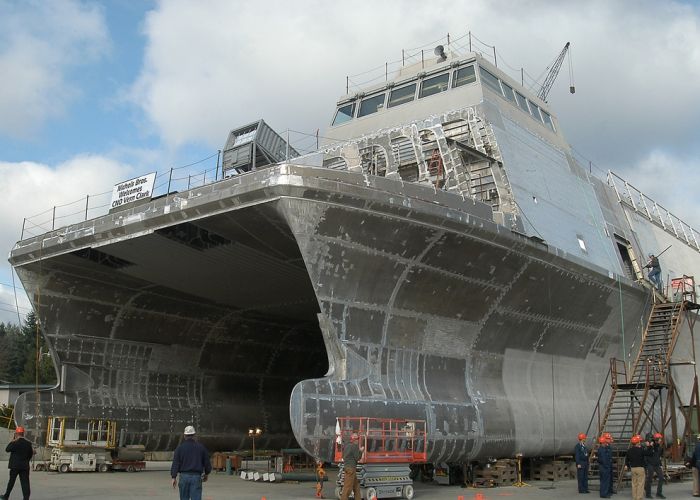|
|
The United States Navy
|
Our ships are our natural bulwarks.—Woodrow Wilson
A modernization program beginning in the 1880s brought the U.S. in line with the navies of countries such as Britain and Germany. In 1907, most of the Navy's battleships, with several support vessels, dubbed the Great White Fleet, were showcased in a 14-month circumnavigation of the world. Ordered by President Theodore Roosevelt, it was a mission designed to demonstrate the Navy's capability to extend to the global theater.
The Navy saw little action during World War I, but nevertheless the strength of the United States Navy grew under an ambitious ship building program associated with the Naval Act of 1916. Naval construction, especially of battleships was later limited by the Washington Naval Conference of 1921-22, however, construction of aircraft carriers continued, accelerating after the New Deal which provided funding for the construction of the USS Yorktown (CV-5) and USS Enterprise (CV-6). By 1936, with the completion of the USS Wasp (CV-7), the U.S. Navy possessed a carrier fleet of 165,000 tonnes displacement, although this figure was nominally recorded as 135,000 tonnes to comply with treaty limitations.
The U.S. Navy grew into a formidable force in the years prior to World War II, with battleship production being restarted in 1937, commencing with the USS North Carolina (BB-55). Though ultimately unsuccessful, Japan attempted to allay this strategic threat with the 1941 surprise attack on Pearl Harbor. Following American entry into the war, the U.S. Navy grew tremendously as the United States was faced with a two-front war on the seas. It achieved notable acclaim in the Pacific Theater, where it was instrumental to the Allies' successful "island hopping" campaign. The U.S. Navy participated in many significant battles, including the Battle of the Coral Sea, the Battle of Midway, the Battle of the Philippine Sea, the Battle of Leyte Gulf, and the Battle of Okinawa. By 1943, the Navy's size was larger than the combined fleets of all the other combatant nations in World War II. By war's end in 1945, the United States Navy had added hundreds of new ships, including 18 aircraft carriers and 8 battleships, and had over 70% of the world's total numbers and total tonnage of naval vessels of 1,000 tons or greater. At its peak, the U.S. Navy was operating 6,768 ships on V-J Day in August 1945.
|
|









